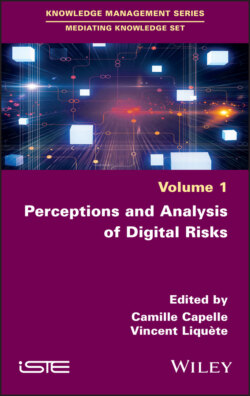Читать книгу Perceptions and Analysis of Digital Risks - Группа авторов - Страница 25
1.2.2. What are the risks in education?
ОглавлениеFor several years now, the educational system has been communicating on the need to prevent certain abuses such as cyberbullying, violation of image rights or disinformation. Many actors work closely with schools to produce and disseminate information to members of the educational community. The Commission Nationale de l’Informatique et des Libertés (CNIL) works on the rights and duties on the Web and the protection of personal data; the Centre de Liaison pour l’Éducation aux Médias et à l’Information (CLEMI) assists in the analysis of sources and the critical evaluation of sources; the police or associated organizations are also involved in informing and supporting the actors of the educational community, who are faced with digital risks.
Those critical of digital technology in schools argue that it is likely to increase inequalities among students. They consider that the digital practices of young people are essentially consumer or leisure practices, far removed from academic expectations. Thus, working at school with these tools would likely present risks for students such as cognitive overload and attentional deficit, and could reinforce certain stereotypes related to the heterogeneous support of families on the Internet, which does not allow all students to have cultural references or sufficient critical distance from the content available. According to this presupposition, which is still widely criticized, “a large proportion of young people would thus fall prey to commercial or ideological manipulations of all kinds and could in no way take advantage of the potential for emancipation and access to culture offered by digital technology…” (Becchetti-Bizot 2017).
On the other hand, the school system has been trying for years to set up several plans to develop digital uses, including the computer plan for all in 1985, the digital plan for education in 2015, and the digital plan for school confidence in 2018. However, digital practices are still not permanently embedded in school practices and the digital literacy of students is often a one-time practice that is not yet fully integrated in disciplinary teaching.
For Vincent Liquète and Benoît Le Blanc (2017), a “shift from comprehension to use or even manipulation” occurred between the 1970s and the 2000s with the arrival of digital technology in schools. Whereas audiovisual and radio technologies were established in schools from a comprehension and critical perspective, the integration of digital technology seems to be based on the need for technical mastery of these tools. This new approach could therefore run the risk of reducing students’ ability to understand, analyze and criticize these information and communication technologies and their uses in society. The authors note a diversity in the ways in which teachers have appropriated and invested in digital technology over the course of this decade:
[There is] the “prophet” teacher singing the praises of technologies and, more recently, the digital environment, the “sales” teachers wishing primarily to link the school to market trends and employability issues, the “activist” teachers proposing alternatives especially via freedom and the common good, and the “innovator” teachers claiming that digital technologies drive creativity and new ways of doing things (Liquète and Le Blanc 2017, p. 11).
Our hypothesis is that another mode of investment in digital technology by teachers has emerged in recent years in the face of perceived dangers for students or for the teacher themselves: that of renouncing any desire to integrate digital technology into the classroom, on the grounds of the risks incurred with respect to families, a feeling of incompetence or a certain moral code. This hypothesis led us to investigate in order to better understand teachers’ feelings about these topical issues.
